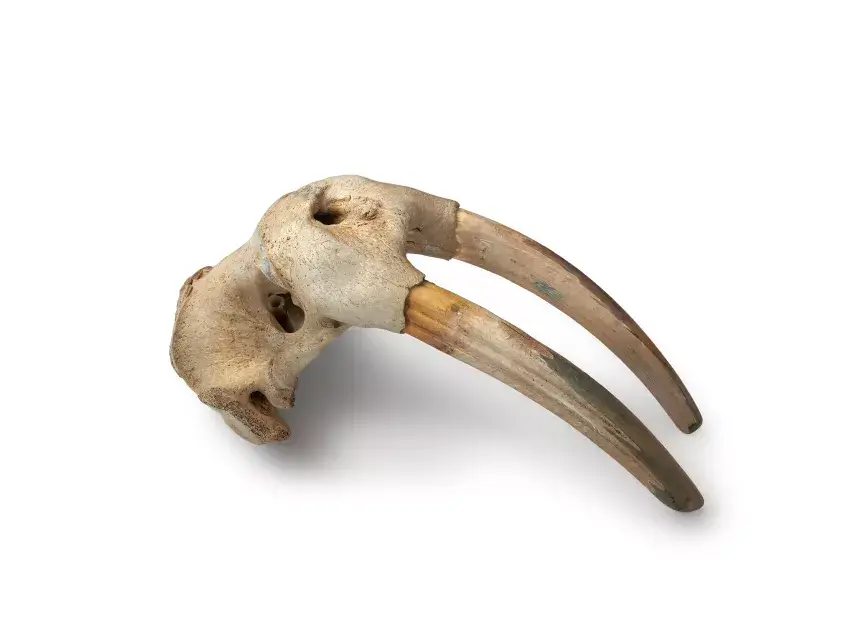By examining the DNA of ancient walrus ivory, an international research team led by Lund University in Sweden has found that centuries before Christopher Columbus “discovered” North America, the Nordic Vikings and Arctic indigenous peoples reached High Arctic Greenland. It was discovered that they may have been trading ivory. .
In medieval Europe, walrus ivory was a valuable commodity, supplied by Scandinavian intermediaries who expanded across the North Atlantic in search of the product and established settlements in Iceland and Greenland in the process. .
However, it was long unclear where exactly the traded ivory came from. According to a recent study published in the journal Science Advances, the walrus ivory that was brought to Europe from the Norse settlements in Greenland came from extremely isolated hunting grounds in the Arctic Circle.
“What really surprised us was that much of the walrus ivory exported to Europe came from very remote hunting grounds deep in the high Arctic. “It has always been thought that they simply hunted walruses near major settlements in southwestern Greenland,” says Peter Jordan, professor of archeology at Lund University.
Researchers used genetic “fingerprinting” to reconstruct exactly where traded walrus artifacts came from.
In particular, the North Water Polynya (an open ocean area surrounded by sea ice in northern Baffin Bay between Greenland and Canada) and potentially areas in the interior of the Canadian Arctic are susceptible to high-resolution genetic procurement techniques. was identified by the research team using These areas are well outside the areas traditionally associated with ivory extraction activities in Greenland and Northern Europe.
The research team extracted ancient DNA from the museum’s collection. Sampling at the Canadian Museum of Nature in Ottawa. Photo: Emily Lewis
As the new results began to emerge, another important question arose. If ivory was harvested from the high Arctic, did the Norsemen of Greenland have the navigational skills and technology to dive so deep into the ice-covered Arctic Ocean?
Research team member Greer Jarrett sought to answer this question in a unique way. He conducted experimental voyages in traditional clinker-built Norwegian boats and reconstructed possible routes.
“The walrus hunters probably left Nordic settlements as soon as the sea ice receded. “We had a very tight seasonal window to store it and get it home before the ocean froze again,” said postdoctoral researcher Greer Jarrett. At Lund University.
What did the Norsemen encounter after completing their perilous journey? Importantly, these remote high arctic hunting grounds were not empty polar wastelands. It was inhabited by the Thule Inuit and perhaps other Arctic indigenous peoples, who also hunted walruses and other marine mammals. A new study provides further independent evidence for the existence of long-debated very early encounters between the Norse peoples of Europe and the indigenous peoples of North America, and suggests that the Northern Water Polinya may be the origin of these cross-cultural connections. This also confirms that it was an important stage for encounters.
“This would have been a meeting of two very different cultural worlds. The Norsemen of Greenland had European features, probably wore beards, wore woolen clothing, and sailed in ships made of planks. “They used iron-tipped spears to capture the walruses at the removal site,” says Peter Jordan.
In contrast, the Thule Inuit were arctic-adapted specialists who could hunt walruses in the open sea using sophisticated toggle harpoons. They would have worn warm, insulated fur clothing and had more Asian features. They paddled kayaks or used open Umiak boats made of animal skins stretched over the frames.
“Of course we can never know for sure, but on a more human level, these surprising encounters, set in the vast and frightening landscape of the High Arctic, probably evoke a degree of curiosity, fascination. , all of which would have encouraged social interaction, sharing and possibly even exchange, especially from an indigenous and more “Eurocentric” Nordic perspective. “More research needs to be done to properly understand the and motivations,” concludes Peter Jordan.
According to the authors, the findings suggest that Nordic ivory harvesters eventually expanded into very remote areas of the Arctic, encountered indigenous peoples of the North American Arctic, and likely traded ivory with them. This supports the idea that this was done.
lund university
Cover photo: Norsemen brought ivory “packages” back to Europe (skulls with tusks). Photo: Mikkel Høegh-Post

